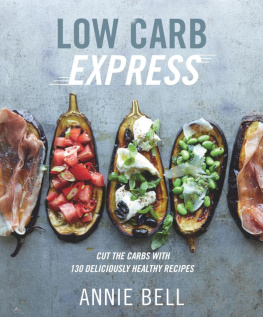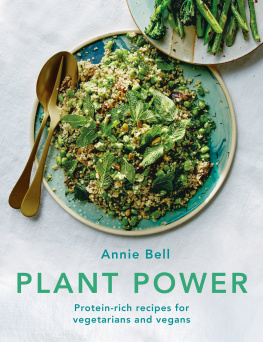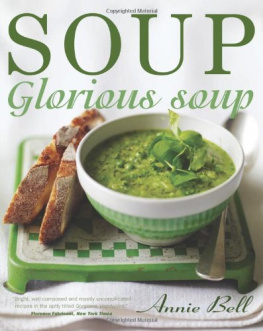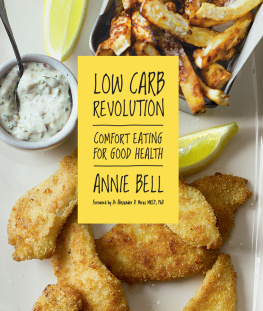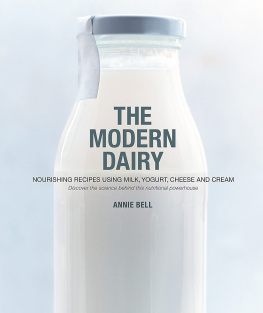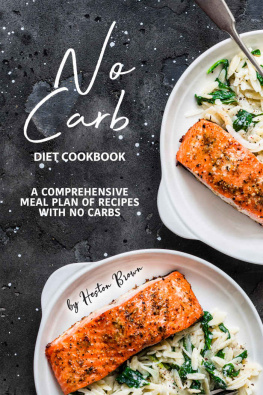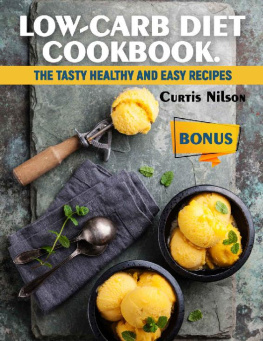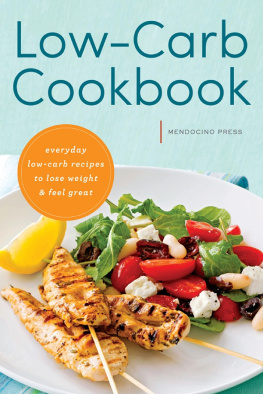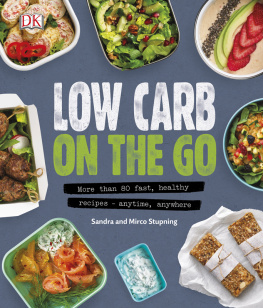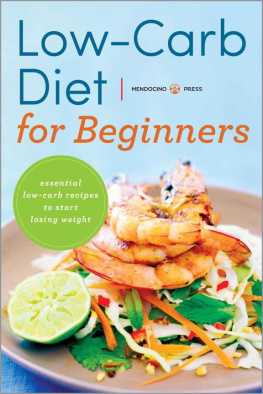Contents
Guide

Contents
How to Use This Ebook
Select one of the chapters from the and you will be taken straight to that chapter.
Alternatively, jump to the to browse recipes by ingredient.
Look out for linked text (which is blue) throughout the ebook that you can select to help you navigate between related sections.
You can double tap images to increase their size. To return to the original view, just tap the cross in the top left-hand corner of the screen.
Preface
Low carb is a giant umbrella of a term that underpins any number of branded diets the Atkins, Dukan, South Beach and Banting are just a few that have become household names and the principle is simple. In essence, the idea is to bump up your protein intake, eating fats, include some carbs with the emphasis on non-starchy fresh vegetables, and avoid processed foods and added sugars. And, in short, this approach works. Whether you are after an effective means of maintaining a stable weight, or are seeking to shed a few recalcitrant kilos, it can be readily tailored to suit you.
In addition, it is accessible. There is no need to carry a pair of microscales to calorie count, no recourse to special foods, it has the all-essential and elusive staying power. It is a way of eating that becomes second nature after a while, unlike so many diets or regimes that are so far removed from your comfort zone they have you looking for the nearest emergency exit. Any way of eating that is likely to work in the long-term has to fit in with your lifestyle, tastes, culture and health needs, and eating this way is endlessly adaptable. It is enjoyable and socially malleable.
But, being such a broad sweep, inevitably there are good low-carb diets and there are bad ones, healthy and unhealthy approaches. In the interim years since I wrote Low Carb Revolution I am guilty of having become a low carb geek. This started by returning to university to read a masters in human nutrition, which presented an opportunity to explore the science behind low-carb diets, and to gain an understanding about our metabolisms and how different foods affect us. I also wanted to understand more about the followers of such diets their motivations, likes and dislikes, whether there are any trends that are common to every type of low-carb diet, and, finally, the optimum way of approaching this way of eating.
So this book is the distillation of that journey. I learned a great deal; in particular I was struck by how health conscious low-carb followers are. Considering that the key trends of a low-carb diet are to replace the starchy carbs, principally refined grains like pasta, white bread and rice, with non-starchy carbs such as green vegetables, aubergines, mushrooms and celeriac, and to reduce or omit added sugar, there is everything to recommend it. Low carb doesnt mean giving up grains entirely, but certainly rethinking how we include them: better quality whole grains served in smaller amounts with more fresh vegetables. While five a day, based on a total of 400 grams, may be the official recommendation for our veg intake, it is now known that the benefits of eating more increase incrementally above that figure. So the low-carb diet ticks another box, contributing to our need for dietary fibre, vitamins and minerals that can be lacking in refined carbohydrates.
In recent years healthy eating has preoccupied us like never before. Diets with no scientific evidence to support them come and go every year. We have seen so-called sugar-free diets that replace refined white sugar with honey, maple syrup and dates, low alkaline diets, detox diets, fermented food diets, clean eating, the list goes on, and there will always be some new fix around the corner. But if there is a holy grail of how to eat, then the Mediterranean Diet is widely regarded as offering the greatest health benefits and is linked to a lower incidence of heart disease, certain cancers and dementia. My design for a low-carb diet is tailored to reflect this diet, and the recipes that follow are similarly rich in vegetables, fruit, fish, legumes and extra virgin olive oil. For those that want a moderate lifestyle blueprint that really works, this is about as good as it gets.


Introduction
Blueprint for success
Ask a dietician, nutritionist or doctor the best way to lose weight, or stop gaining it, there is a strong chance they will tell you 'Eat less. Move more.' Simple. So why dont we? Why is it that so many people continue to struggle with their weight?
The reasons are complex; we are all different shapes, sizes, ages and our gender and genes all have a part to play, as do our hormones, our nervous system and our level of physical activity. Our genetic makeup especially plays a crucial role not only in determining our BMI or body mass index, which is used to determine whether we are a healthy weight (45-75% of individual variation is deemed hereditary), but in our eating behaviours and how we metabolise energy. It is also now known, for instance, that certain genetic mutations can lead to obesity. Undoubtedly in future an increased understanding of human genetics will lead to targeted interventions, including whether an individual will respond to particular dietary therapies or regimes. Perhaps in ten years time there will be a test to determine whether you are best suited to Intermittent Fasting (as popularised in the 5:2 diet), or to a low GI diet.
Added to our individual differences, we live in what is euphemistically known as an obesogenic environment. In short, one that predisposes us to weight gain, and unfortunately at a time when our sedentary lifestyles mean that we need less energy than we used to. The smarter life gets with its gizmos and gadgets, the less we need to get out of a chair. And there is no escaping that it is all too easy to eat more than we need. How hard it is to resist the temptation of the ready availability of high energy (for which read calorific) foods that call out from the high street every time we pop out, that can make it all but impossible to say 'no'. Why settle for just a caf latte when you can have a warm chocolate fudge cookie to keep it company? Comfort eating too, another energy trap, the lure of a thick, buttery slice of cake or warming pud with ice cream is a downfall for many. Frequently, carrying a little extra weight is a slow and insidious creep of extra kilos that comes of too many occasional high energy treats, or being a little less active.
Satiety
But, aside from the many factors that can conspire to weight gain, for many the eat less simply doesnt work because it means going hungry, and with that comes temptation. I believe that the key to the success of following a low-carb diet lies with satiety. This is the sense of feeling full after a meal that disinclines us to eat again, and moderates how much we eat on the next occasion. The principal trend of a low-carb diet is to replace starchy carbohydrates such as bread, pasta and rice with vegetables. This practice allows us to eat a much larger volume of food, as well as consuming more dietary fibre that helps to lower the energy density of the food in question. In short, you can eat more.

